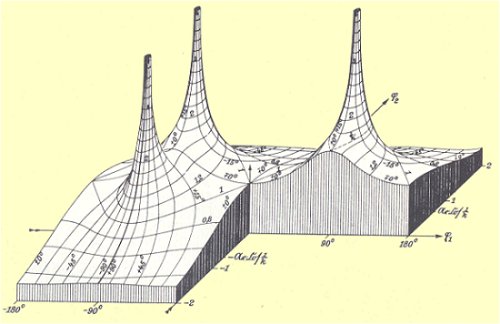The Calculus
Today, let's do calculus. The University of Houston's College of Engineering presents this series about the machines that make our civilization run, and the people whose ingenuity created them.
Math is an odd business. Anyone who's literate knows arithmetic. Anyone with a high school education has been exposed to some algebra. Almost all of you have done the arithmetic of algebra in which numbers are replaced with symbols.
But far fewer people have taken the next step and studied calculus. So the word calculus sounds pretty arcane to most of us. In fact, it's not any harder than algebra, but it has quite a different look and feel. Algebra still looks a little like arithmetic, while the calculus goes off into a different place entirely.
To see the difference, think about the kind of questions that each answers: Algebra gives us a foolproof way to answer questions like this one: "We have 240 dollars to give away. We want to give Mary twice as much as Bill and Jake three times as much. How much money do we give Bill?"
Calculus, on the other hand, gives us a foolproof way to answer a question like this one: "I know how my drag racer's acceleration changes with its speed. If I go from a standing start to eighty miles an hour in ten seconds, how far have I traveled?
Algebra is a language in which we solve problems by equating numerical elements in symbolic form. We assign a symbol to Bill's payment, equate all the payments to 240 dollars, and do the arithmetic. We get the number that'll make the symbol satisfy the equation, and we find that Bill gets forty dollars.
Calculus, on the other hand, deals with instants in time, or points in space. It deals with sequences of fleeting moments or places. Go back to that dragster: At one instant it's going thirty miles an hour. But what does that mean? It doesn't spend an hour on a thirty-mile track. The time it spends at that speed is actually zero. It merely passes through thirty miles an hour.
Instantaneous speed is a pure calculus idea, yet we all understand it. That's because the language of the calculus has percolated into everyday life. So, how far did the dragster go in its acceleration test? It traveled the sum of distances that each of those instantaneous speeds took us during the ten seconds.
The calculus is a simple language that lets us talk about things that change from moment to moment or point to point. It serves us when we deal with smooth movements or smooth shapes. It is the language by which we can calculate the capacity of an oddly shaped gas tank, or the trajectory of a space probe aimed at Mars.
It's also a language that codifies intuitive ideas that are deeply felt and understood. We all see our lives as fleeting moments and as the sum of fragments almost too small to notice. Indeed, Joan Didion captures the calculus perfectly in her dark and passionate novel, Run River. She asks,
Was there ever in anyone's life span a point free in time, devoid of memory, a night when choice was any more than the sum of all the choices gone before?
I'm John Lienhard, at the University of Houston, where we're interested in the way inventive minds work.
(Theme music)
The number of calculus textbooks is vast. Simply go to your library and browse them. In the Library of Congress catalog system, they are to be found under the call number QA303.
I am grateful to UH colleagues Lewis Wheeler and Ralph Metcalfe for their counsel on this episode.
If we let Bill's payment be x, then: x + 2x + 3x = $240 or 6x = $240. Thus x= $40. We cannot solve the drag racer problem until someone first tells us just how the acceleration varies with speed.

The calculus becomes downright dramatic in these graphs of elliptic integrals